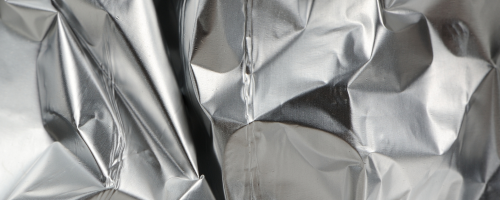Laboratory analysis and expertise of aluminum samples and of aluminum alloys
Our laboratory is expert in metallurgical analysis and the analysis of alloys such as aluminium, offering advanced expertise in determining chemical composition and physico-chemical properties.
You want to carry out an analysis of aluminium and its alloys
Laboratory analysis of aluminium
Aluminium and its alloys are at the heart of many industrial applications, where their quality determines the performance and durability of parts. Variations in composition, the presence of impurities, changes in mechanical properties or recycling issues: these problems can have an impact on the conformity and reliability of materials. As a specialist in metallurgical analysis, FILAB supports manufacturers by carrying out precise, standardised aluminium analysis to guarantee the quality, safety and traceability of materials.
What are the special characteristics of aluminium and its alloys?
Its unique combination of properties, such as lightness, mechanical strength, corrosion resistance, thermal and electrical conductivity, etc., make aluminium the second most widely used metal after iron. make aluminium the second most widely used metal after iron.

Analysis of aluminium alloys
Aluminium alloys have a wide range of properties and are used in many industrial sectors.
The FILAB laboratory carries out comprehensive analysis of the composition of aluminium and alloys to help optimise production and recycling processes or any other need you may have as an industrialist.
We identify alloying elements and measure concentrations to meet the technical specifications of each project.
Analysis of aluminium composition
Analysing the composition of aluminium ensures that materials meet the required quality standards.
Our laboratory offers a service dedicated to verifying the chemical composition of aluminium and its alloys, by measuring the proportions of chemical elements.
These analysis validate the conformity of materials for demanding applications in terms of durability and resistance.
Why choose the FILAB laboratory to analyse aluminium and aluminium alloys?
Our methods for analysing aluminium and its alloys
The FILAB laboratory offers metallurgical analysis services on aluminium to several hundred customers, some of which are COFRAC ISO 17025 accredited.
We use state-of-the-art analytical methods, such as optical emission spectrometry and ICP analysis, to provide highly accurate aluminium and aluminium alloy analysis results.
These techniques enable us to detect elements in very low concentrations and provide detailed reports.
To see further: our expertise in aluminium alloys
In addition to routine metallurgical analysis, the FILAB laboratory can provide you with expert metallurgical analysis and failure studies on your aluminium-based samples:
Metallographic examination of aluminium
Weld analysis on aluminium
Study of fracture surfaces on aluminium
Study of ageing (corrosion, surface alteration, etc.) on aluminium
Thickness measurement of aluminium part coatings
Study of corrosion resistance on aluminium
Analysis and characterization of aluminium surfaces (roughness, defects, etc.)
Analysis Alloy composition
Study of microstructures on aluminium material
Applications of aluminium alloy analysis
Aluminium and its alloys are widely used in the aerospace, automotive and other demanding industries. Controlling their composition and mechanical properties is essential to guarantee :
- Compliance with standards and regulations (EN, ASTM, ISO, etc.)
- Mechanical strength and durability of parts
- Optimisation of manufacturing and recycling processes
- Identification of defects and contamination that could affect performance
FAQ
Variations in the content of alloying elements such as silicon, magnesium or copper can affect the strength, machinability and performance of parts. An imbalance in chemical composition can lead to structural defects or loss of mechanical performance.
Our elemental analyses (ICP-OES, XRF, OES) enable precise control of the chemical composition of alloys to ensure compliance with industrial requirements.
The presence of metallic impurities such as iron, lead or zinc can reduce corrosion resistance and alter essential properties such as thermal conductivity. Such contamination can compromise the durability and reliability of components.
Our purity and trace metal detection tests identify contaminants and ensure optimum quality of aluminium alloys.
Exposure to high temperatures, mechanical stress and oxidation can alter the material's microstructure and reduce its mechanical performance. This can lead to increased brittleness or premature deformation of aluminium parts.
Our mechanical and metallographic testing enables us to assess the strength of the material and identify the formation of undesirable phases that can affect the durability of components.
Aluminium recycling requires accurate analysis to avoid non-conforming mixtures and to guarantee the quality of the materials reused. Incorrect identification of alloys can lead to inadequate performance and compliance problems.
Our controls enable reliable identification of alloys, facilitating management of production flows and guaranteeing the quality of recycled raw materials.








